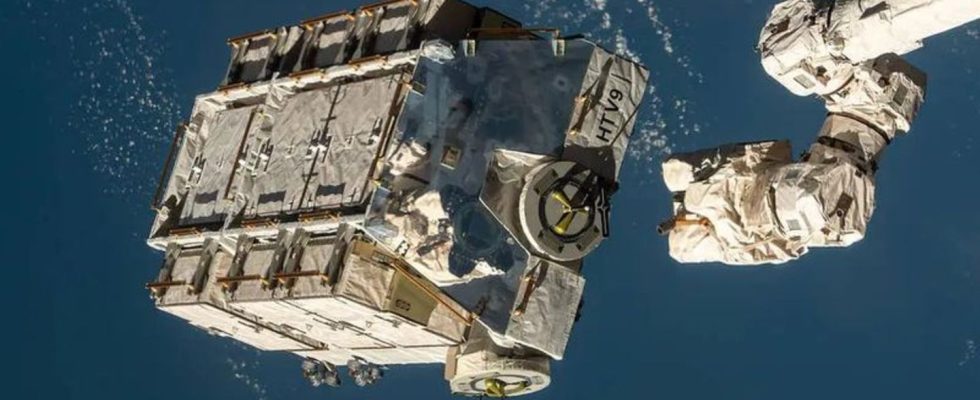Space travel
ISS debris could hit Earth
An external pallet with used nickel-hydrogen batteries is released by a robotic arm on the ISS. photo
© NASA/dpa
A discarded battery pack from the ISS flies around the earth for three years. Now it will soon enter the atmosphere. Some debris could reach the earth’s surface.
Debris from a discarded battery pack from the International Space Station ISS could land on Earth on Friday – but they are unlikely to hit Germany. This was announced unanimously by the Federal Ministry of Economics and Climate Protection, which is responsible for space travel, and the German Aerospace Center (DLR).
The Federal Office for Civil Protection and Disaster Assistance (BBK) distributed official danger information via several warning apps, according to which the probability of rubble falling on Germany is very low. “If the risk increases, you will receive new information,” it said. However, “luminous phenomena or the perception of a sonic boom” are possible.
A little later, the Federal Office classified the information. “We are concerned with transparency and sharing the information we have,” a spokeswoman for the authority told the German Press Agency. There are three warning levels for such warnings. The lowest is the currently available danger information, which provides information about a possible danger. At warning level two there is a danger. At the highest warning level one, there is a danger to life and limb. Then immediate action is necessary.
According to DLR calculations, the object could enter the atmosphere over northern North America. The time window specified is a 20-hour corridor around late Friday evening German time. However, the estimate for re-entry could still change. However, it is unlikely that parts of the battery pack will fall over Germany. “Bild” first reported on the topic.
“Initial analyzes by the German Space Situational Center have shown that parts of the battery packs can survive re-entry and reach the Earth’s surface,” said the Aerospace Center. Before re-entry, the object flew over Germany several times, but a threat in this country is “currently viewed as statistically unlikely.” The Federal Ministry wrote that a threat to Germany was “very unlikely.”
Crisis response mechanisms
It further announced: “If, contrary to expectations, there are indications that Germany is affected, the existing crisis response mechanisms of the federal and state governments will be used to respond appropriately to a possible threat. However, based on the current status, this is more than unlikely. Nevertheless, it will Object closely monitored.” The Federal Office for Civil Protection and Disaster Relief also provided information on its website.
According to the information, the object is a platform with battery packs that is about the size of a car and weighs 2.6 tons. The platform was deliberately separated from the ISS on March 21, 2021, only to enter the atmosphere years later. It will largely burn up there. Such maneuvers are planned in such a way that debris that reaches the earth’s surface falls, if possible, over uninhabited areas, said a DLR spokesman.
The German space situation center in Uedem will monitor the further development of the upcoming re-entry and report to various federal ministries, state ministries and authorities, wrote the Ministry of Economics.
It is a common procedure for space debris to enter the atmosphere and burn up there. Just a few weeks ago, the European satellite “ERS-2”, which was launched almost 30 years ago, came to such an end and was destroyed as planned. It also happens from time to time that smaller debris reaches the earth’s surface.

